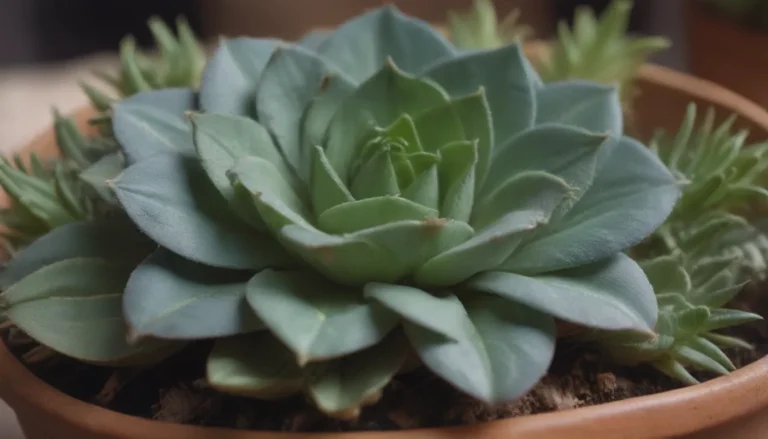The Ultimate Guide to Growing and Caring for Canada Lily (Lilium Canadense)

Are you looking to add a touch of elegance and beauty to your garden? Look no further than the stunning Canada lily, also known as meadow lily or wild yellow lily. This herbaceous perennial is known for its nodding, trumpet-like blooms that will surely add a pop of color to your landscape. In this comprehensive guide, we will delve into everything you need to know to successfully grow and care for the Canada lily.
Understanding Canada Lily Care
When it comes to caring for the Canada lily, there are a few key factors to keep in mind to ensure optimal growth and health of your plant. Let’s break it down step by step:
Light
Like many lily species, the Canada lily thrives in full sunlight. However, it can also tolerate partial shade as long as it receives a minimum of four hours of sunlight each day. When choosing a location for your Canada lily, be sure to prioritize sunlight exposure for the best results.
Soil
Canada lilies prefer moist soil conditions that are rich and loamy. It’s important to avoid waterlogged soil, as this can lead to root rot. Additionally, aim for acidic to neutral soil pH levels to provide the ideal environment for your plant to thrive.
Water
Proper watering is essential for the health of your Canada lily. Aim for deep, weekly watering during the growing season, increasing frequency during periods of hot weather to prevent wilting. Keep an eye on the soil moisture levels and water whenever the soil feels dry to the touch.
Temperature and Humidity
Native to North America, Canada lilies prefer moderate-to-warm temperatures and can tolerate considerable humidity. However, they do require a period of cold weather dormancy to reemerge in the spring. Avoid tropical climates, as they may not be favorable for the growth of Canada lilies.
Fertilizer
In nutrient-rich, humusy soil, Canada lilies generally do not require additional fertilizer. However, if you suspect your soil is lacking in nutrients, you can incorporate compost to boost the available nutrients for your plant.
Propagating Canada Lily
If you’re looking to expand your Canada lily garden, propagation is the way to go. The best method for propagating mature Canada lilies is through division of the bulb. Here are two ways you can propagate your Canada lily:
Propagating Using Bulblets
- Replant smaller offshoot bulbs, also known as bulblets or bulbils.
- Allow several years for the propagated lily to mature and bloom.
Propagating Using Scales From the Bulb
- Break off the small scales covering the parent bulb to propagate.
- Perform propagation after the Canada lily has finished flowering and entered dormancy, typically in late summer or early fall.
Cultivating Canada Lily Blooms
Witnessing the vibrant blooms of the Canada lily is a sight to behold. Here are some key points to keep in mind to encourage blooming and enjoy a colorful display in your garden:
Bloom Months
Canada lilies typically bloom during the summer months, specifically in June, July, and August. Prepare for a burst of color during these months as your lilies come into full bloom.
Blooming Duration
Each Canada lily bloom lasts for about a week, with the overall blooming period spanning approximately three weeks. Remember that proper care and a period of dormancy are essential for annual blooming.
Enhancing Blooms
Maximize bloom production by providing full sun conditions for your Canada lily. While partial shade is tolerated, full sun exposure is optimal for encouraging abundant blooms.
Deadheading Flowers
While deadheading won’t produce a second flush of flowers for lilies, it is essential for maintaining a tidy appearance in your garden. Remove spent blooms and stalks down to the leaves to promote healthy growth.
Common Issues with Canada Lily
Even though Canada lilies are resilient plants, they can still face challenges under certain conditions. Here are some common problems to watch out for:
Yellowing Leaves
Yellowing leaves are often a sign of excess moisture in the soil. Ensure your lily is not sitting in waterlogged soil and adjust your watering schedule as needed to prevent this issue.
Curling Leaves
If you notice curling, twisting, or stunted growth in the leaves of your Canada lily, it may be infected with the lily mosaic virus. This virus, spread by aphids, can lead to mottled green leaves and is incurable. To prevent the spread of the virus, it’s best to remove and destroy the affected plant and bulb.
In conclusion, the Canada lily is a stunning addition to any garden with its vibrant blooms and easy care requirements. By following the tips and guidelines outlined in this guide, you can successfully grow and care for your Canada lilies, ensuring a beautiful display of color in your outdoor space. Embrace the beauty of the Canada lily and watch your garden flourish with these elegant, trumpet-like blooms!





